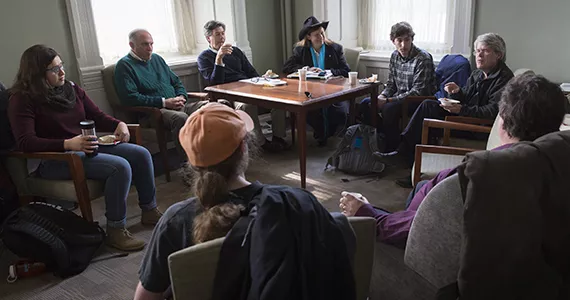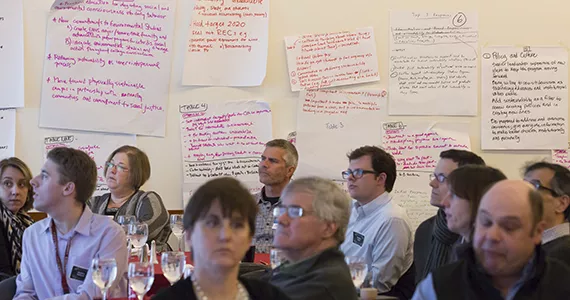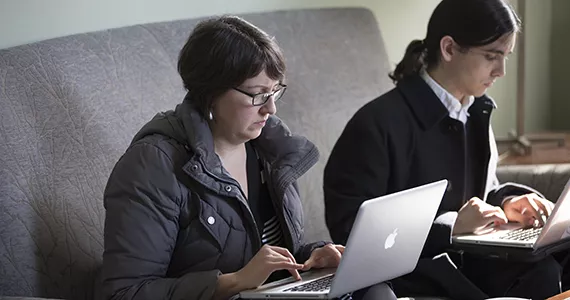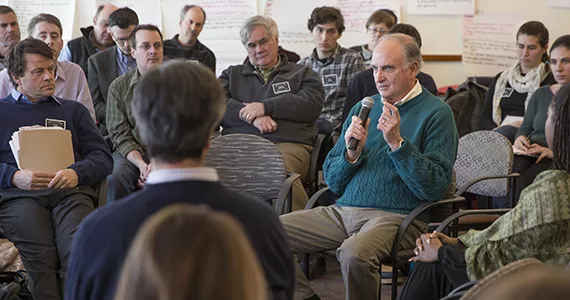A cross-section of the College community and outside experts converged on campus earlier this month for a Sustainability Charrette, helping to define our vision for a more socially just and environmentally friendly Swarthmore.
The unprecedented, two-day event, funded by the Board of Managers, was designed to focus Swarthmore’s efforts on environmental sustainability and outline the steps needed for the College to take a leadership role, both locally and globally, to address climate change. Over 100 students, faculty, staff, alumni, Managers including Board Chair Gil Kemp '72 and Property Committee Vice Chair David Singleton '68, Borough officials, and community partners met with thought leaders from around the world to develop approaches for a “just and sustainable future.”
“I found the charrette to be energizing and engaging,” says Director of Sustainability Laura Cacho. “I was thrilled to see the close collaboration between our community and the invited experts.”
The Charrette featured David Orr, Nikki Silvestri, Hunter Lovins, Bill Browning, Greg Kats, John Fullerton, and Kevin Hydes, who gave presentations and also collaborated with the community members in small- and large-group sessions. They offered fresh — and, at times, frank — takes on what Swarthmore is doing now and what it can do better.
“I can’t imagine many other colleges or institutions taking on something like this with no idea of what people like us are going to come in and say,” Fullerton remarked. “That’s an important step in this process.”
Facilitated by Sandy Wiggins, a professional facilitator and past chair of the U.S. Green Building Council, participants discussed many of the 160 sustainability proposals submitted by the College community this fall as a result of Interim President Connie Hungerford’s call for big ideas, and expanded on many of the proposals. A detailed summary of this work was presented to the Board of Managers at its meeting on Feb. 20. Building on its recent commitment of $12 million for the Biology, Engineering, Psychology (BEP) complex to be designed to the highest environmental standard ever seen on campus, the Board of Managers will be evaluating additional environmental initiatives in the coming months.
For some specific initiatives, such as improving the energy efficiency of College-owned buildings and installing a large solar array, the next step is to analyze the costs and benefits of the proposals to determine pricing and priorities, says Cacho.
“For other ideas, particularly those focused on changing the curriculum or establishing a new policy, we will need to bring them to the campus community this spring for broader discussion,” she says.
But while making the case for short- and long-term actions, participants kept coming back to an over-arching principle: To weave sustainability into the fabric of the College, particularly its educational mission.
“That was the unifying idea in the room,” says Wiggins. “Embedding the concepts of social justice and environmental sustainability into governance, curriculum, facilities, the larger community … everything.”
If the College community achieves that, says Kats, “realigning and reinventing itself for our current moral challenge,” it will position Swarthmore as a “real moral beacon.”
“It won’t be the few millions you shift or the few tons you save,” he adds, “but rather the crop of students you shape who go out and change the world."







